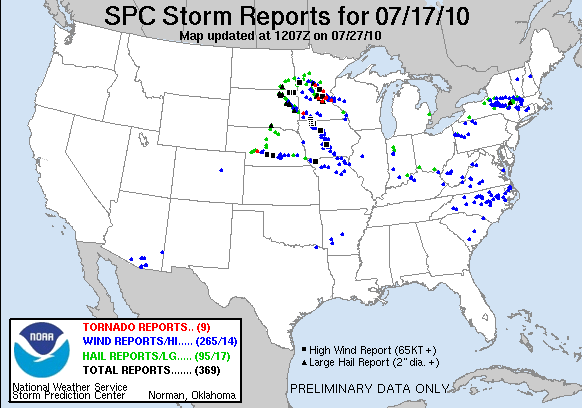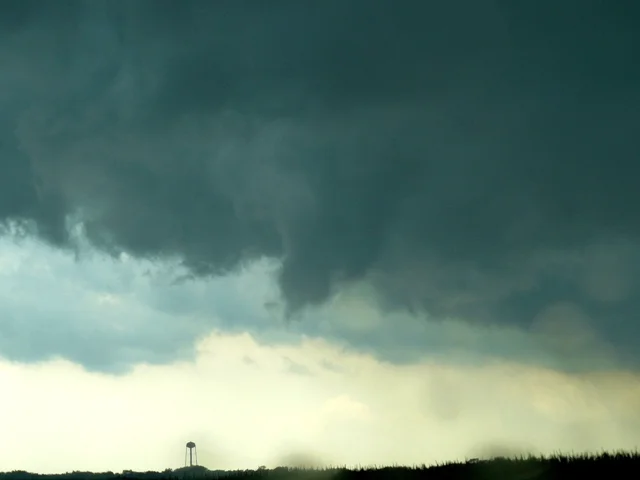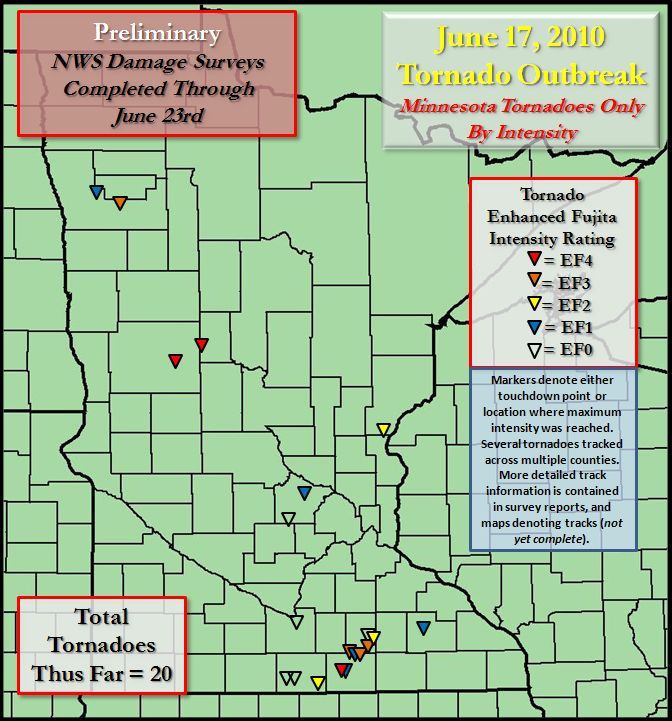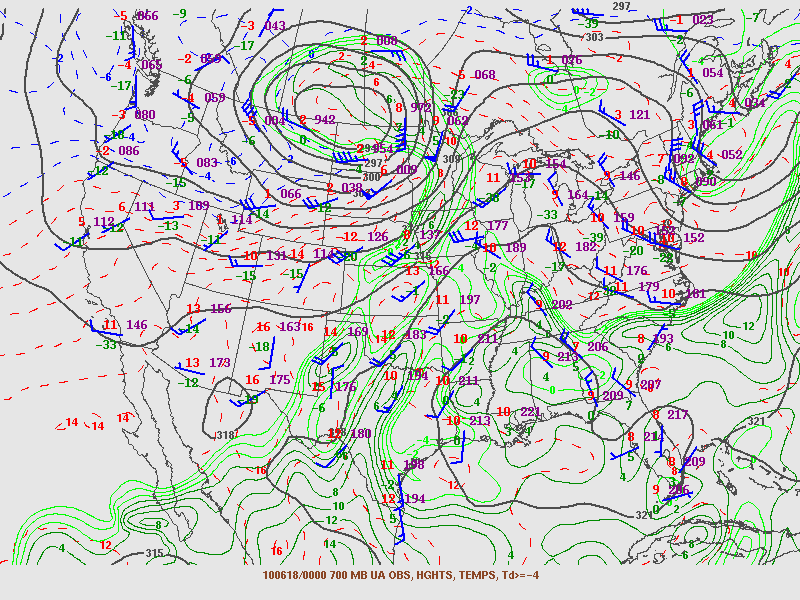06-17-10 CHASE LOG: MN
Going into it, I knew this day would have tornado potential but never imagined it would turn into something like this.Peggy Willenberg, her daughter Molly Snyder, and I left the Twin Cities at 9am and headed west to Ortonville, MN where we waited a short while for initiation.Storms fired ahead of a dryline and on a pre-frontal trough near Ortonville shortly before 2pm.These storms took their time maturing while quickly moving north-northeast towards the I-94 corridor.The dryline seemed rather evident with a 20-30 degree dewpoint drop behind the boundary and little to no cold air advection.We followed the storms out of Ortonville on I-75, paralleling the storms to our east till we got to near Tenney.At this point, a pair of storms intensified near Morris, so we traveled east on Hwy 55 to Elbow Lake and then south on Hwy 59 to intercept the stronger storm that became tornado warned as we got on it near Hoffman.The environment for these storms was incredibly sheared and strongly unstable.Forecast hodographs were strongly curved in this area leading up to the event and they seemed to verify due to the strong southeast inflow winds that were gusting 20-30 mph at times and the 0-6 km bulk shear of near 50 kts and could have been higher.RUC Mesoanalysis indicated SB CAPE values of 2000-3000 j/kg helped fuel the explosive development, especially with nearly full sun ahead of the developing CU field leading up the event.The dryline and trough appeared to merge and surge (dryline bulge) upon entering west-central MN and this certainly could have increased the convergence and helped with the explosive development of these storms as well.
As the storm we were on moved north from Hoffman to Brandon and then north of I-94, it encountered the warm front that was slowly lifting through the area.This likely helped enhance the low level shear and lead to the development of the first tornado, and a big one at that, near Leaf Valley Township shortly after 3:30pm.This was a large tornado with multiple vortices that had wedge characteristics at times as it moved north, paralleling and crossing Cty Rd 6 to the north of Leaf Valley.We then drove east on Cty Rd 14 and then north on Hwy 29 to stay ahead of the developing wedge.We intercepted the storm again near Parkers Prairie where the wedge weakened some and became a large elephant trunk, then stovepipe, under a rapidly rotating and very large mesocyclone.We continued to parallel the tornado on Cty Rd 42 out of Parkers Prairie and then Cty Rd 75 towards Wadena.On this path to our west, the tornado grew to a massive size and appeared to be nearly a mile wide at one point and actually looked to have multiple wedge tornadoes on the ground at one time, although I cannot confirm for sure if the leading “wedge” was actually on the ground or another large, low meso that was nearly on the ground and rotating extremely fast.As we neared Wadena, the storm weakened and the tornado lifted as another storm was beginning to take shape and take over to the south of the original tornadic storm.We got through Wadena, north on Hwy 71, and then doubled back into Wadena to see what was on the storm to the south that had a couplet on radar already.Our plan was to head south on Hwy 71 and get just east of the approaching couplet.However, the road was blocked so we had to turn around and head east on Hwy 10 a mile or two out of town and watch the storm approach.Roughly 3 miles south of Wadena, shortly before 5pm, the tornado touched down and grew to massive size, becoming rain-wrapped upon approaching and eventually moving directly through Wadena.This was obviously a helpless feeling for us but we did call in the tornado to the NWS as soon as it touched down south of town.
We then attempted to continue to follow this large tornado on Cty Rd 23 after it had moved north of Wadena and the storm appeared to weaken and no longer have a tornado as we got to near Sebeka.There were more rotating storms moving up from the south so we attempted to stay ahead, traveling south on Hwy 64 to Hwy 210 towards Brainerd.In Pillager, we viewed a large lowering that was very close to the ground on a storm to our north.This was reported by a spotter as a tornado in that area, but I cannot confirm that it actually touched down from how far away we were.
What an incredible day this was as several more tornadoes were reported across the state and a few strong tornadoes that came close to friends and family in northern IA and southern MN.Certainly, I would consider this a tornado outbreak, especially by MN standards.My sympathies are with those that were impacted by the tornadoes, especially those families of the victims and others that lost animals, homes, businesses, and other personal property.
I will be adding more to this chase log over the next several weeks and hopefully finding the time to do a case study on this significant event.






































































































































































